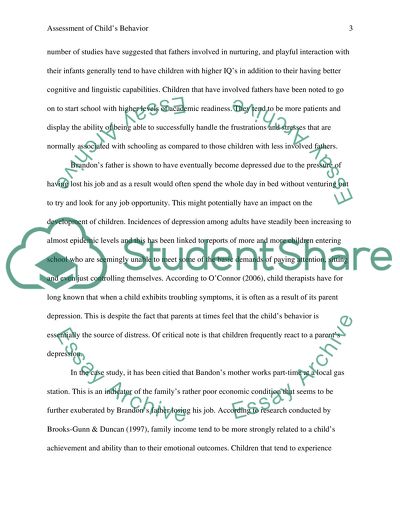Cite this document
(“Assessment of Childs Behavior Case Study Example | Topics and Well Written Essays - 1500 words”, n.d.)
Assessment of Childs Behavior Case Study Example | Topics and Well Written Essays - 1500 words. Retrieved from https://studentshare.org/psychology/1658240-assessment-of-childs-behavior
Assessment of Childs Behavior Case Study Example | Topics and Well Written Essays - 1500 words. Retrieved from https://studentshare.org/psychology/1658240-assessment-of-childs-behavior
(Assessment of Childs Behavior Case Study Example | Topics and Well Written Essays - 1500 Words)
Assessment of Childs Behavior Case Study Example | Topics and Well Written Essays - 1500 Words. https://studentshare.org/psychology/1658240-assessment-of-childs-behavior.
Assessment of Childs Behavior Case Study Example | Topics and Well Written Essays - 1500 Words. https://studentshare.org/psychology/1658240-assessment-of-childs-behavior.
“Assessment of Childs Behavior Case Study Example | Topics and Well Written Essays - 1500 Words”, n.d. https://studentshare.org/psychology/1658240-assessment-of-childs-behavior.


